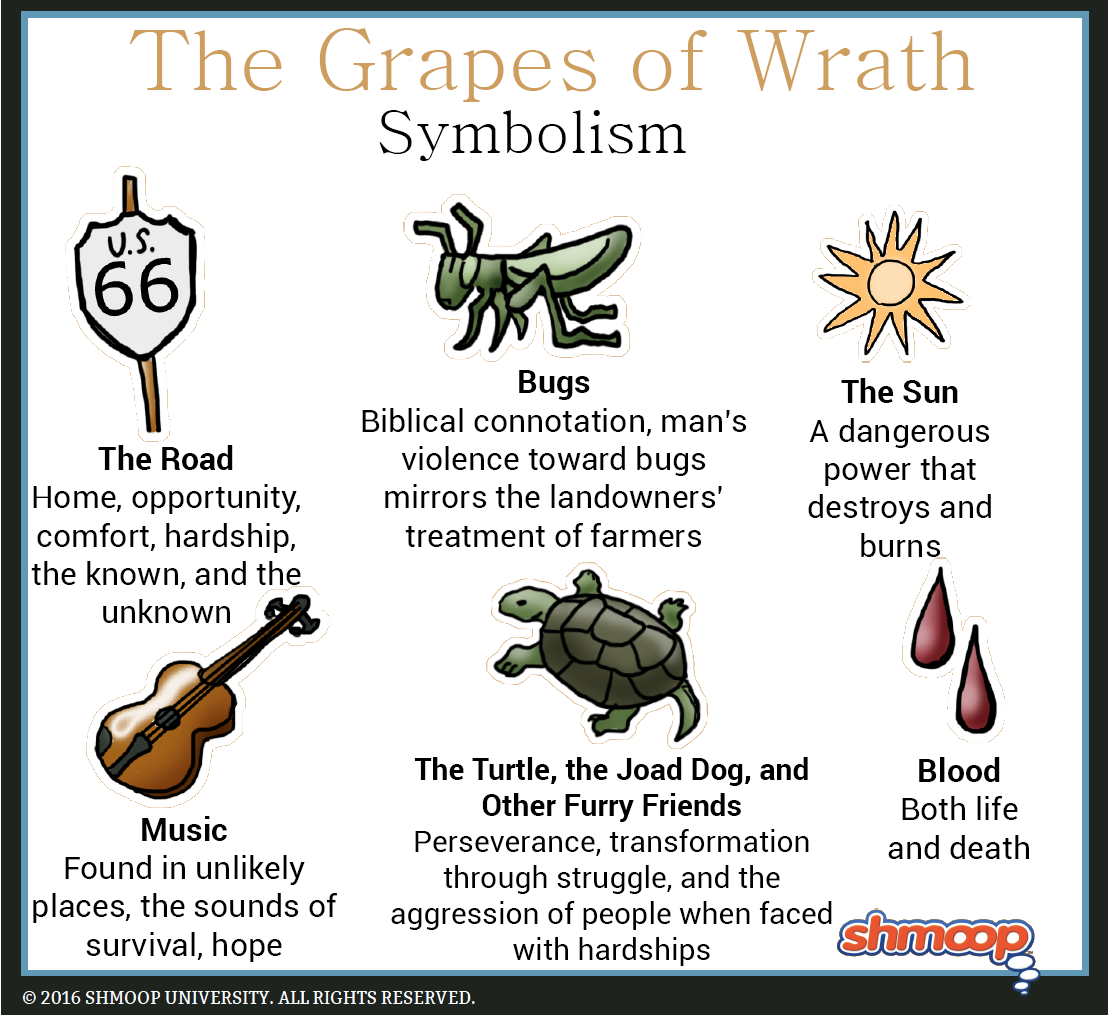Symbolism, Imagery, Allegory
 (Click the symbolism infographic to download.)
(Click the symbolism infographic to download.)
A Bug's Life
There are more insects and insect-y images in this novel than you could shake a flyswatter at. When Tom Joad hitches a ride with a truck driver, a grasshopper finds its way into the truck cabin:
Joad reached forward and crushed its hard skull-like head with his fingers, and he let it into the wind stream out the window. (2.56)
Wow. Tom Joad is cracking skulls, at least in the figurative sense. Could he have just swatted the poor grasshopper out the window?
Nope. Not after what grasshoppers did to the Midwest.
On July 26, 1931, a swarm of grasshoppers hit
the Midwest region of the United States, destroying crops and
devastating farms. The swarm was so thick, that the sun was temporarily
blocked. That's an insane number of hungry insects... and an insane number of lives ruined because of them.
Our narrator pays special attention to the insects that populate the farmland, and we are reminded of that Biblical story in the Book of Exodus that describes the swarm of locusts that descended upon Egyptian crops after the Pharaoh refused to free the Hebrew slaves.
However, in The Grapes of Wrath, we also notice how easy it is for humans to kill insects, and there's a violence to the way, for instance, Tom crushes the grasshopper. We begin to see similarities between the way humans treat insects and the way landowners treat tenant farmers: when the going gets tough, the tough get violent.